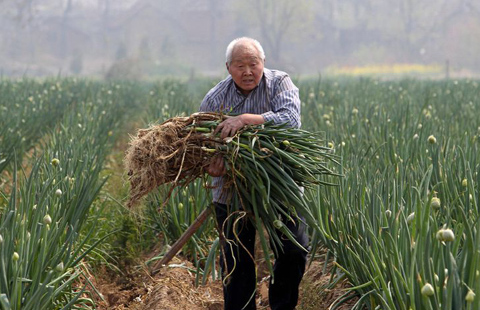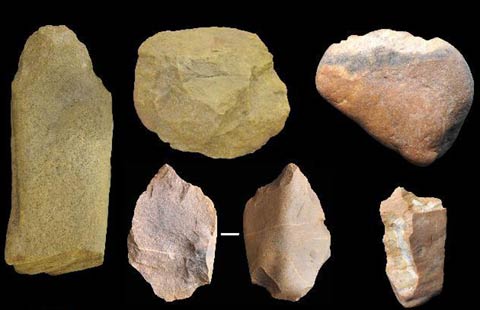China's energy technology may strengthen LatinAm ties
Updated: 2015-04-13 02:35
By PAUL WELITZKIN in New York(China Daily Latin America)
|
||||||||
Focusing on exporting its world-class technology in renewable energy to Latin America would enable China to add a new front to its relationship with the region and become a role model in the effort to combat climate change, according to a US-based academic and environmental scientist.
The economic ties between China and Latin America have been dominated by commodities. Latin America has resources like oil and copper that China needs to keep its economy humming. "Climate change will not change the (commodity) relationship, but instead offer an opportunity for China and Latin America to add an interesting component to their trading," Guy, Edwards, a research fellow at the Center for Environmental Studies at Brown University in Providence, Rhode Island, told China Daily in an interview.
Edwards and his Brown colleague, J. Timmons Roberts, last month published a paper for the Brookings Institute A High-Carbon Partnership? Chinese-Latin American Relations in a Carbon-Constrained World.
Edwards said the leaders of China and several Latin American nations, including Brazil, Chile and Mexico, are ready to elevate the importance of climate change.
"In January at the first China-CELAC (Community of Latin American and Caribbean States) Forum, climate change was important enough to be mentioned," said Edwards. "China and Latin American countries could launch a climate change initiative through CELAC that could focus on financing the reduction of greenhouse gas emissions from agriculture, forestry, energy and transportation, as well as sharing technology."
Climate change is emerging as a major topic for both China and Latin America, said Edwards.
"China has a very serious air pollution problem and Latin American countries are vulnerable to things like drought and glaciers melting. So there is certainly an environmental reason for both to unite on this," he said.
Together, China and CELAC account for roughly 36 percent (China 27 percent / CELAC 9 percent) of the world's total global greenhouse gas emissions. "China has developed impressive technology in wind and solar and they are eager to find outside markets for it," Edwards said.
Earlier this month, the Chinese Hanergy Group said it would invest $1 billion to construct a 400-megawatt solar power plant in the African nation of Ghana.
"The political conditions are ripe for China and Latin America to cooperate on low-carbon projects," said Edwards. "Both are committed to a multilateral solution for climate change working within the framework of the United Nations Climate Conference in Paris later this year."
According to a report released on April 1 by the Global Wind Energy Council, the growth of wind power in 2014 was spurred largely by China and Brazil, followed by Mexico and South Africa.
"China installed an astonishing 23 Gigawatt (GW) of new wind power last year, bringing its cumulative total to more than 114 GW, and Brazil was the world's 4th largest market in 2014, entering the top 10 in cumulative rankings for the first time," the council said.
"Nobody predicted that China would install 23 GW of new wind power alone," the report said, noting it set another record for the country.
"China in 2014 crossed the 100,000 megawatt (MW) mark, adding another milestone to its already exceptional history of renewable energy development since 2005," the report added.
In Latin America in 2014, the wind energy market tripled in size compared with 2013, for cumulative installed capacity growth of nearly 80 percent, the report said, with Brazil leading the market at No 4 in the world with nearly 2,500 MW installed last year, and moving into 10th place in the global cumulative rankings.
Mexico installed 633.7 MW of new capacity to reach a total of 2, 551 MW by the end of 2014, and aims to generate 35 percent of its electricity from renewable energy by 2024, with up to half of that target coming from wind.
paulwelitzkin@chinadailyusa.com
- IS gunmen attack S. Korea's embassy in Libya, killing 2
- Obama, Castro hold historic meeting, vow to turn the page
- Washington's trick of 'thief crying stop thief' on South China Sea
- Evacuation from Yemen ending as situation deteriorates
- Burnaby signs 'art' bridge
- Bird flu outbreaks reported in two Mexican states

 Take home as many as you like
Take home as many as you like
 Weifang holds kite fair
Weifang holds kite fair
 3,000 Chinese sturgeons released into Yangtze River
3,000 Chinese sturgeons released into Yangtze River
 Apple Watch makes debut in China's Hangzhou
Apple Watch makes debut in China's Hangzhou
 Urban chameleon blends into background
Urban chameleon blends into background
 Highlights of top 10 archeological finds in 2014
Highlights of top 10 archeological finds in 2014
 Jordan super fan shows off collection
Jordan super fan shows off collection
 A soldier husband's labor of love
A soldier husband's labor of love
Most Viewed
Editor's Picks

|

|

|

|

|

|
Today's Top News
US backs China's campaign to hunt
down fugitives
Obama, Castro hold historic meeting, vow to turn the page
Consulate general praises C-100 on 25th anniversary
Schwarzenegger to address Beijing film festival
Reform, innovation key to boost demand, growth: Li
Washington's trick of 'thief crying stop thief' on South China Sea
CreditEase, US firm team up
US, Cuba hold highest-level talks since 1961
US Weekly

|

|






